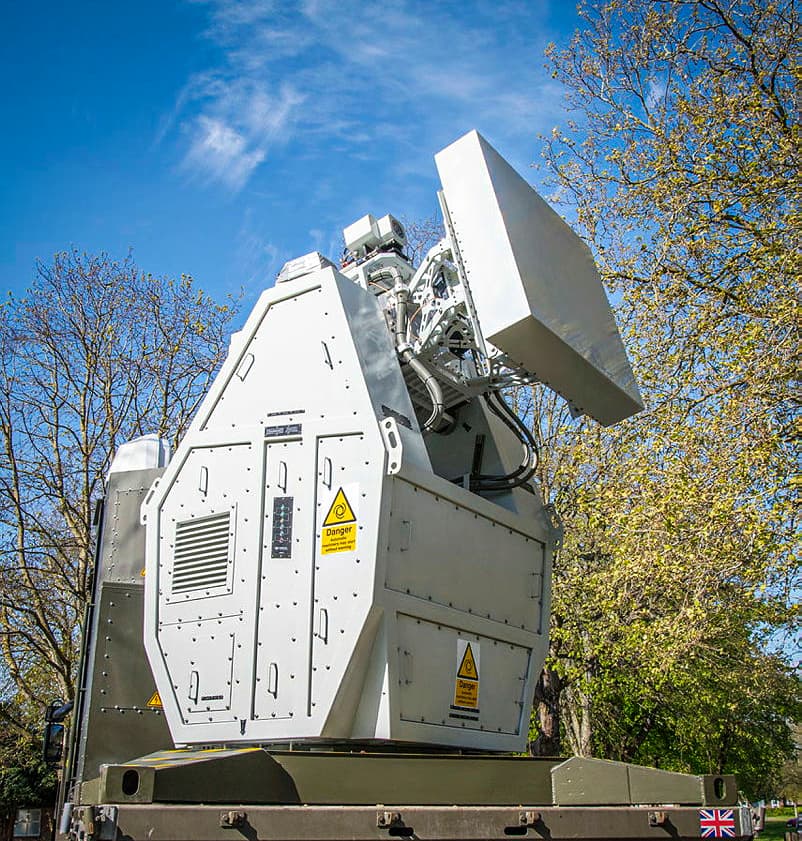The Radio Frequency Directed Energy Weapon (RFDEW) is part of the British government’s policy to respond to a changing geopolitical situation, placing the country’s defense on more of a war footing as it increases spending to 2.5% of GDP by 2030. This policy change also includes fast-tracking the rollout of lasers and other directed energy weapons.
The latter is extremely important, because, well, knocking out a drone that costs a few grand with a missile costing millions of dollars per round is bad economics – see, for example, the US$1.3-2.5 million Sea Viper missile used to take out a US$20,000 drone, as reported by Navy Lookout. Also, missile stockpiles tend to be pretty small, and swarms of cheap drones could easily exhaust them.

Crown Coyright
Energy weapons overcome these problems because, though the weapon itself costs money, on a shot by shot basis they are astonishingly cheap. And, since they fire energy rather than solid rounds, they can potentially fire an infinite number of times so long as the energy holds.
The RFDEW is a self-contained energy weapon that can be operated by one person, and can detect, track, and engage multiple threats at a range of up to a kilometer (0.62 miles). It can also be installed on everything from a warship to the back of a lorry. The main target will be drones or aircraft electronics, blasting them with a burst of electromagnetic radiation.
Being developed as part of Project Ealing, the RFDEW is scheduled to be tested by the 7th Air Defence Group along with the DragonFire laser weapon in September. The results will be used to evaluate the systems and determine possible improvements.
“We are already a force to be reckoned with on science and technology, and developments like RFDEW not only make our personnel more lethal and better protected on the battlefield, but also keep the UK a world leader on innovative military kit,” said Minister for Defence Procurement, James Cartlidge. “As we ramp up our defense spending in the coming years, our Defence Drone Strategy will ensure we are at the forefront of this war-fighting evolution.”
Source: UK Government
Source of Article